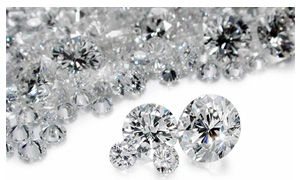 Why not offer synthetic diamonds for the same size, but half the price? Will the average Joe know the difference? Probably not. It is safe to say that the De Beers marketing campaign has got to be what the most persuasive marketing scheme ever!
Why not offer synthetic diamonds for the same size, but half the price? Will the average Joe know the difference? Probably not. It is safe to say that the De Beers marketing campaign has got to be what the most persuasive marketing scheme ever!
There are three main reasons diamonds are so expensive:
1. Diamonds are historical
Diamonds have been used by many people worldwide to store and transport wealth across geographies and generations, especially people who have been persecuted throughout history and forced to migrate against their will. For instance, there are many stories in pre-WWII Nazi Germany of Jewish families trading family assets through diamonds because they were easy to conceal. (There’s actually a scene in Schindler’s List that shows some family members hiding diamonds in a loaf of bread.)
2. Diamonds are emotional, and closely tied to marketing
The popularity of diamonds is the result of one of the most successful marketing campaigns in history. This was largely orchestrated by De Beers and included product placement as well as celebrity and royal associations. The modern symbolism of diamonds along with the idea of the diamond ring as a perfect gift of love are largely creations of the marketing departments.
The DeBeers company has basically controlled the supply of rough diamonds for years. Many believe this set up to be a cartel, like OPEC.
Diamonds have been branded as the default signal for wealth, interpersonal commitment, purity, rarity, scarcity, brilliance, and all the emotions which mark each of these moments. By artificially controlling the scarcity of the product (which is not really scarce), it drives up the cost. Consumers don’t usually deviate from the norm for these special occasions. We all want the best of the best, don’t we?!
3. Diamonds are an accumulation of marginal costs (Basically, everyone wants a piece of the pie!)
If you peel back the layers of the diamond trade and think about just how a diamond gets on the finger of a young woman (or man) ready to marry, consider this chain of events:
- A diamond is mined by an employee of a company and sent to a warehouse where rough diamonds are packaged together and sold to traders.
- Those traders transport the diamonds to cities in the world where the best diamond-cutting talent exists, such as Antwerp, Tel Aviv, Mumbai, and places in Southeast Asia. These cutting centers buy the rough diamonds and use a mix of handmade skill and technology to cut the diamonds in the right shape and in the right way to maximize each stone’s brilliance.
- The stones are put into parcels and then sold to wholesalers, who look through boxes of stones from similar lots, but are so dense that they are not able to investigate each small stone individually. Instead, they have to apply crude statistical tests on looking at small samples. The wholesalers buy up parcels and then sell the best stones to individuals, sell the majority of stones to jewelry makers, and in some cases, make standard jewelry to sell directly to retail players.
- Lastly, many hands touch the diamond in making the jewelry as well, such as those who make settings, who polish the stones, and the runners who deliver pieces back and forth.
Whew, that is a lot of people in the diamond production process! By the time a wedding ring reaches someone’s finger, it has literally touched so many hands and each person in the chain needs to profit a bit from the transaction.
So next time you go shopping for a diamond and think: “Man that’s expensive!”….now you’ll know what you’re paying for and why. I sure do wish I was born into the DeBeers family. Maybe in my next life….
